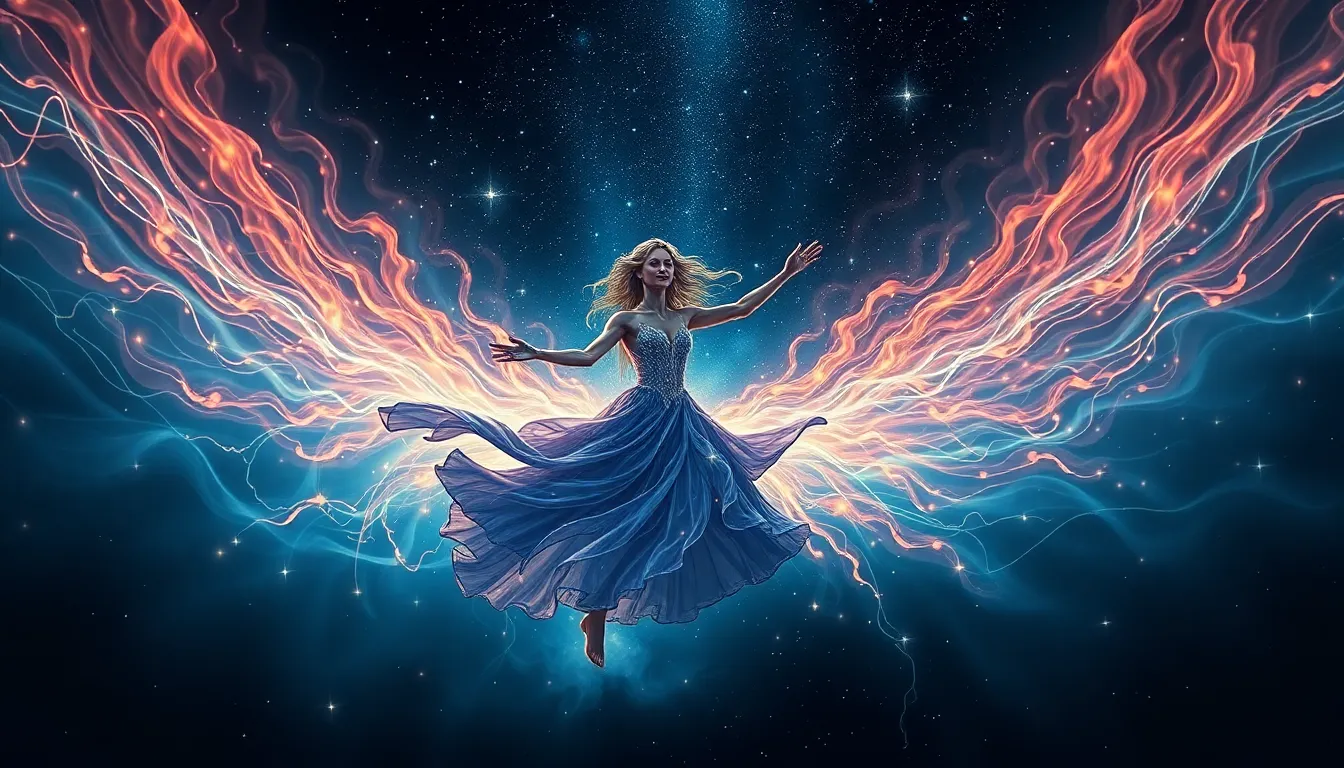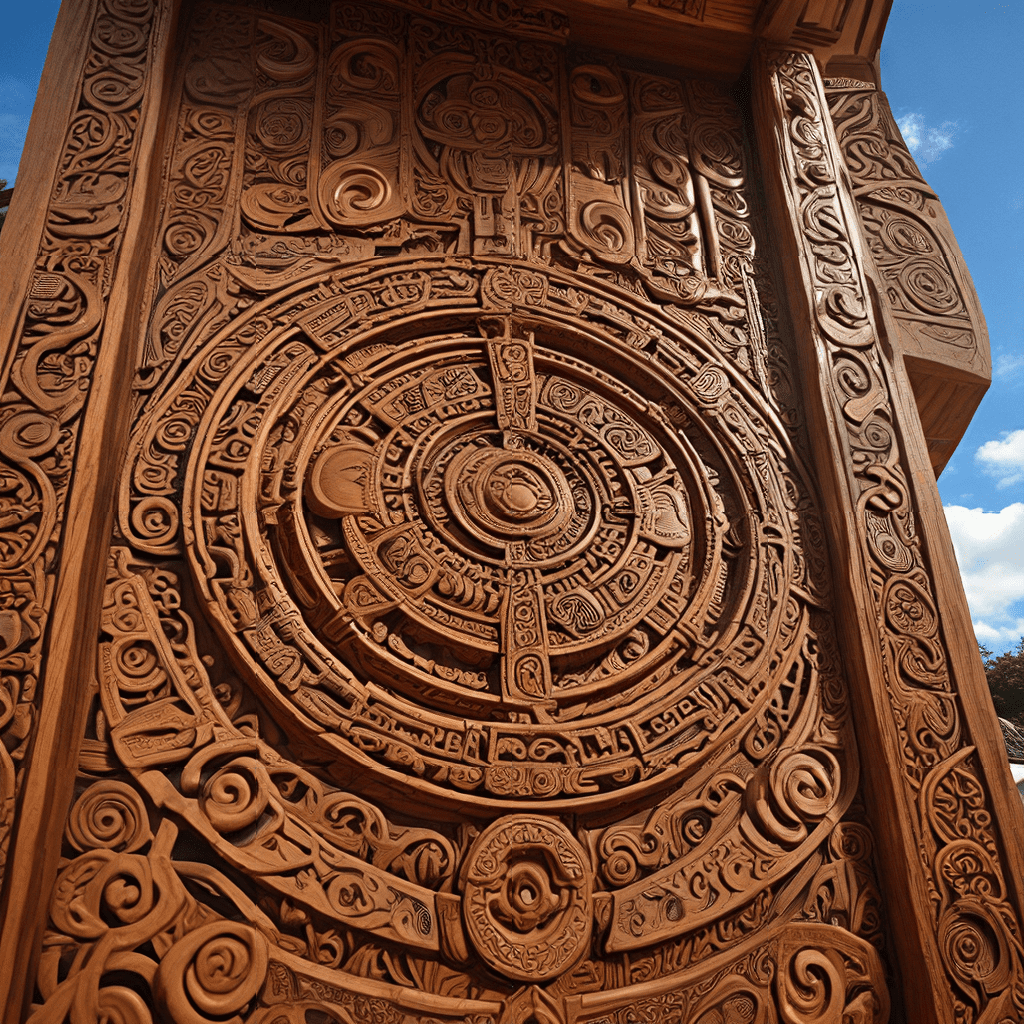The Journey of the Cosmic Dancer: Myths of Movement and Flow
Introduction: The Cosmic Dancer in Mythology
The concept of the cosmic dancer is a profound motif present in various mythologies around the globe. This archetype embodies the essence of movement and flow, symbolizing the dynamic forces of creation and transformation. From the rhythmic beats of ancient rituals to the fluid motions of celestial bodies, the cosmic dancer represents the interconnectedness of existence and the ever-present dance of life.
In many cultures, the act of dancing transcends mere entertainment; it becomes a sacred narrative that encapsulates the struggles, triumphs, and rhythms of life. Through these stories, we see how movement can shape worlds and influence the very fabric of reality.
The Dance of Creation: Mythological Beginnings
Creation myths often depict dance as a vital force that brings order to chaos. In these narratives, movement symbolizes the unfolding of the universe and the establishment of harmony from disorder. For instance:
- Hindu Mythology: In Hindu beliefs, the god Shiva performs the Tandava, a cosmic dance that signifies creation, preservation, and destruction. This dance illustrates the eternal cycle of life and death, where each movement contributes to the cosmic order.
- African Myths: Many African cultures have creation stories that involve the rhythmic movements of dance as a means to invoke the spirits and shape the world. The dance not only tells the story of creation but also engages the community in a collective experience of existence.
- Indigenous Narratives: Indigenous peoples around the world often incorporate dance into their creation stories, where movements mimic the natural world, embodying the connection to the land and the spirit of life itself.
The Divine Dancer: Deities Embodying Movement
Several deities across cultures are intimately associated with dance and movement, each representing different aspects of life and the universe.
- Shiva: The Hindu god Shiva is perhaps the most renowned cosmic dancer, known as Nataraja. His dance is a symbol of the cyclical nature of creation, preservation, and destruction, emphasizing the balance of the universe.
- Dionysus: In Greek mythology, Dionysus is the god of wine, fertility, and ecstatic revelry. His dances celebrate the joys of life and the breaking of societal constraints, embodying the spirit of freedom and transformation.
- Oshun: In Yoruba mythology, Oshun is the goddess of love, fertility, and fresh water. Her dances are fluid and graceful, reflecting the nurturing aspects of nature and the importance of harmony in human relationships.
These deities illustrate how dance represents divine attributes, showcasing the power of movement as a cosmic force that connects the spiritual and physical realms.
Choreography of the Cosmos: The Universe as Dance
The metaphor of the universe as a grand dance is prevalent in many ancient myths, where celestial bodies and cosmic rhythms illustrate the intricate choreography of existence. The movements of planets, stars, and galaxies evoke a sense of harmony and purpose, depicting a universe in perpetual motion.
In various mythologies, the cosmos is often personified as a dancer:
- Greek Mythology: The Pleiades, seven sisters in the night sky, are often associated with the dance of life and the passage of time.
- Hindu Cosmology: The concept of Lila, or divine play, suggests that the universe is a stage on which the cosmic dancer performs, inviting all beings to partake in the dance of existence.
Mythical Heroes and Their Transformative Journeys
Mythical heroes frequently embark on transformative journeys characterized by movement and flow. These journeys often symbolize personal growth and the overcoming of obstacles, with dance serving as a metaphor for their evolution.
- Odysseus: In Homer’s “The Odyssey,” Odysseus’s journey home is filled with trials that test his resolve. Each step he takes is a dance through challenges, ultimately leading to his transformation and return.
- Spider Woman: In Native American mythology, Spider Woman weaves the web of life, teaching heroes about the interconnectedness of all beings through her intricate dances.
Through these journeys, heroes learn valuable lessons about identity, resilience, and the importance of embracing the dance of life.
Cultural Interpretations of Dance: From Ritual to Performance
Dance plays a crucial role across cultures, serving as a medium for rituals, storytelling, and community bonding. Each culture interprets the cosmic dancer in unique ways, reflecting their values and beliefs.
- Rituals: Many cultures incorporate dance into religious and spiritual rituals, using movement to connect with the divine and invoke blessings.
- Storytelling: Dance often serves as a storytelling device, allowing communities to share their history, values, and myths through movement.
- Community Bonding: Group dances foster a sense of belonging and unity, reinforcing social connections and cultural identity.
The Flow of Time: Cycles and Seasons in Myth
The relationship between dance, time, and the cyclical nature of existence is a recurring theme in mythology. Seasonal dances often celebrate the rhythms of nature, highlighting the connection between human life and the environment.
In agricultural societies, seasonal dances are particularly significant:
- Harvest Festivals: Many cultures have dances that celebrate the harvest, expressing gratitude to the earth and the cycles of growth.
- Rites of Passage: Dances marking transitions in life stages often reflect the cyclical nature of existence, honoring the past while embracing the future.
Modern Interpretations: The Cosmic Dancer in Contemporary Art and Philosophy
In contemporary times, the cosmic dancer is reinterpreted by artists and philosophers who explore themes of movement, identity, and existence. Modern dance and performance art draw heavily from mythological motifs, creating new narratives that resonate with today’s audiences.
Philosophers also engage with the idea of the cosmic dancer, examining how movement reflects our understanding of reality and existence. The fluidity of dance serves as a metaphor for the complexities of life, inviting deeper reflections on our place in the universe.
The Healing Power of Dance: Myths and Mental Well-being
Many myths illustrate the connection between movement, flow, and emotional healing. Dance is often portrayed as a therapeutic practice that fosters well-being and personal growth.
- Emotional Expression: Dance allows individuals to express their emotions, providing a cathartic release that can lead to healing.
- Community and Connection: Engaging in dance fosters a sense of belonging and connection to others, which is essential for mental health.
- Mind-Body Connection: Dance promotes awareness of the body and movement, encouraging mindfulness and self-acceptance.
Conclusion: Embracing the Dance Within Us
The ancient myths of movement and flow remind us of the importance of embracing our own dance within the tapestry of life. By understanding the significance of the cosmic dancer, we can find inspiration for personal growth and transformation.
As we navigate the complexities of our existence, let us seek to find our rhythm in the dance of life, celebrating the beauty of movement and the interconnectedness of all beings.



